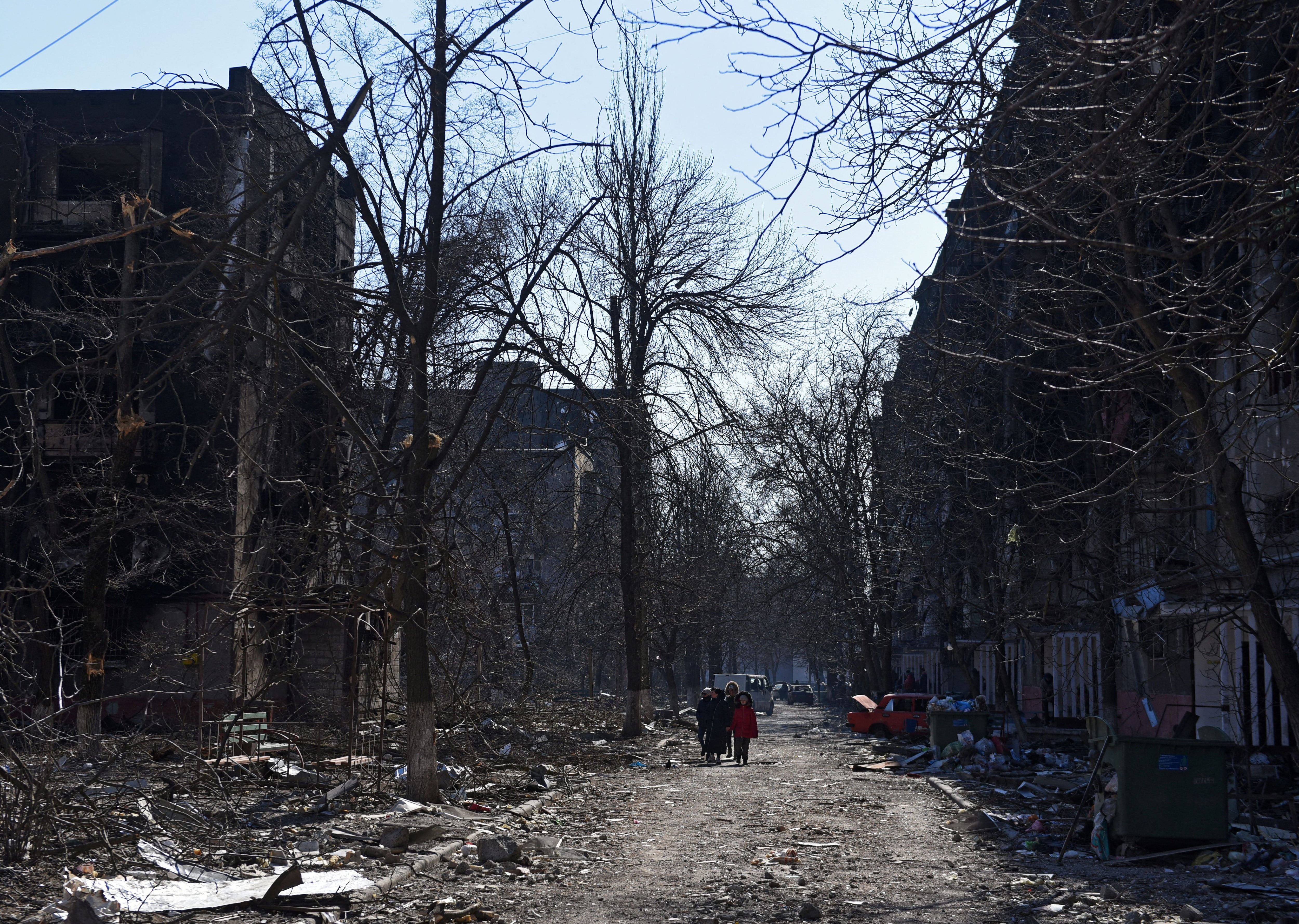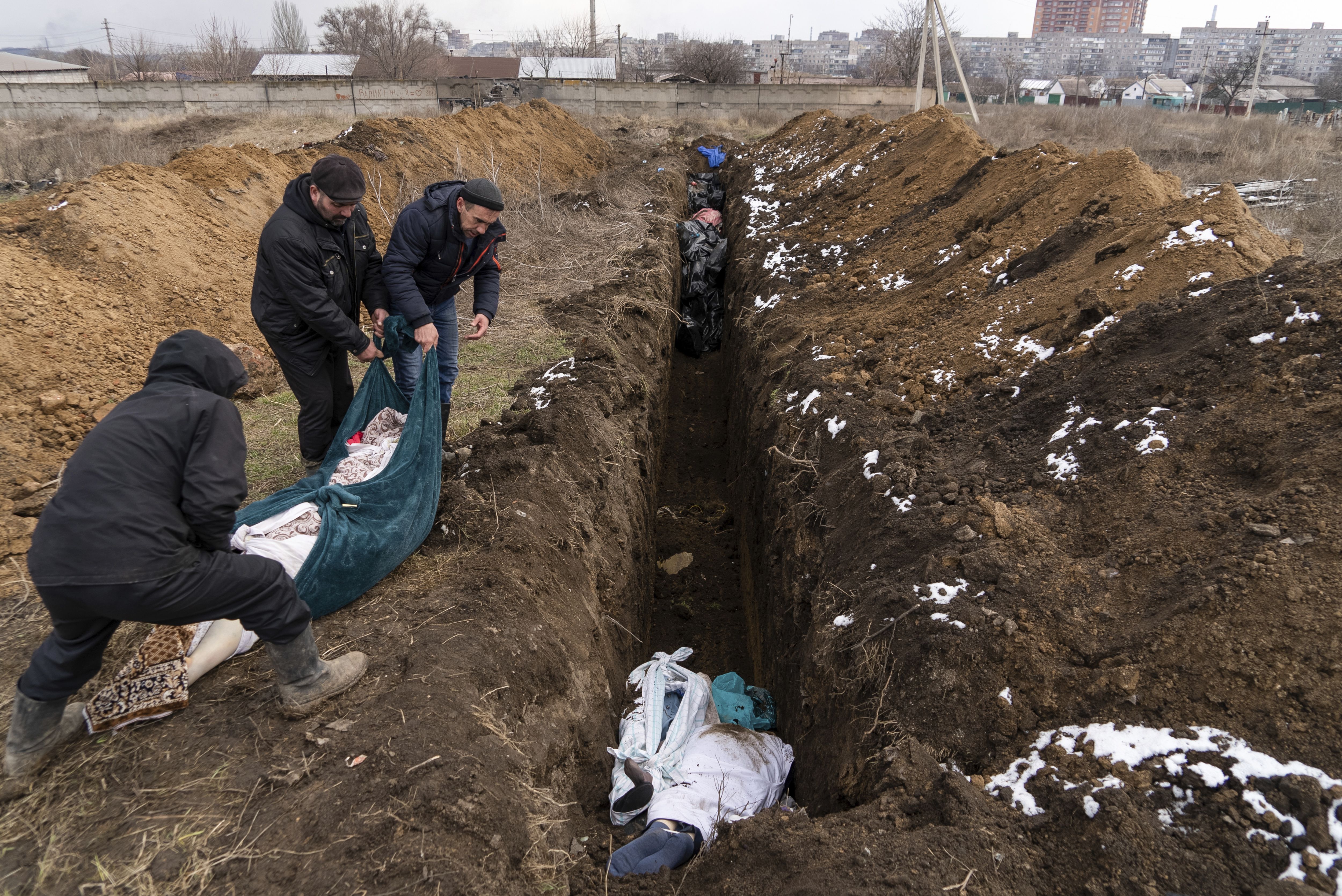
Civilians who made the dangerous flight from the besieged southern port of Mariupol, in Ukraine, described how they had escaped between street to street fighting and next to unburied bodies, while constant Russian bombardment tried to break the city.
While Russian forces maintained the siege and city defenders refused to surrender, the Kremlin's ground offensive in other parts of the country was proceeding slowly or not at all, undermined by lethal rapid attacks by Ukrainians.
The Ukrainian army said on Tuesday morning that it had expelled Russian forces from a strategic suburb of Kiev after an intense battle. The recovered territory allowed the Ukrainian contingent to regain control of a major highway to the west and prevent the capital from being surrounded by the northwest.
But the Ukrainian Ministry of Defense pointed out that Russian forces fighting for Kiev had been able to retake part of other suburbs in the northwest: Bucha, Hostomel and Irpin, some of which have been under attack almost since the start of the Russian invasion at the end of last month.
The troops of Russian President Vladimir Putin are increasingly concentrating their air power and artillery on Ukrainian cities and civilians living there, killing an unknown number of people and causing millions to flee.
A US Defense official, speaking on condition of anonymity to comment on the army's analysis, said that Russia had increased flights in the previous two days, to 300 in the past 24 hours, and had fired more than 1,100 missiles into Ukraine since the beginning of the invasion.
In a video speech broadcast Monday night, Zelenskyy praised those who have defended the country against Russia.
“There is no need to organize a resistance,” he said. “For Ukrainians, resistance is part of their soul.”
In Mariupol, with communications cut off, movements restricted and many neighbors in hiding, it remained unclear what had become of the people who were in a destroyed art school on Sunday and a theater demolished four days earlier. It was believed that more than 1,300 people took refuge in the theater, and that there were about 400 people in the art school.
Mariupol, on the Sea of Azov, is a key target that has been under siege for more than three weeks and has suffered some of the worst scenes of the war.

But there was no clear and independent picture of how close his downfall might be. The Ukrainian Ministry of Defense said on Tuesday that its forces were still defending the city and had destroyed a Russian patrol boat and an electronic installation.
Russia now controls the land connection with Crimea, the peninsula that was annexed in 2014, and blocks Ukraine's access to the Sea of Azov, according to the ministry.
“From the outside, no one can determine if it is really about to fall,” said Keir Giles, an expert on Russia from the British group Chatham House.
Over the weekend, Moscow had offered a safe route out of Mariupol, establishing one corridor heading east to Russia and another to western Ukraine, in exchange for the city's surrender before dawn on Monday. Ukraine flatly rejected the offer long before the deadline was met.
Mariupol officials declared on 15 March that at least 2,300 people have been killed in the siege, some of whom have been buried in mass graves. Since then, no official estimate has been released, but it is feared that the figure will be much higher after six days of attacks.
For those still in the city, conditions have become brutal. The siege has left Mariupol without electricity, water and food, and cut off communications with the outside, plunging residents into a struggle to survive. Recent satellite images showed plumes of smoke rising from buildings destroyed by Russian artillery.
Before the war, Mariupol had about 430,000 inhabitants. It is believed that about a quarter left the city in the early days of the conflict and that tens of thousands escaped during the last week through a humanitarian corridor. Continued fighting hindered previous evacuation attempts.
Those who have managed to leave Mariupol say that the city is devastated.
“It no longer has buildings,” said Maria Fiodorova, 77, after crossing the Polish border on Monday after five days of travel.
A long line of vehicles waited on a road in Bezimenne, while inhabitants of Mariupol sought shelter in a temporary camp set up by Russian-supported separatists in the Donetsk region. It is estimated that some 5,000 people from Mariupol took refuge in the area. Many arrived in cars with signs that read “children” in Russian.

A woman who identified herself as Yulia said she and her family sought refuge in Bezimenne after a bombing destroyed six houses located behind her.
“That's why we got into the car, at our own risk, and we left in 15 minutes, because everything is destroyed there, there are dead bodies lying everywhere,” he said. “We couldn't go anywhere, there were shootings.”
In total, more than 8,000 people escaped to safer areas on Monday through humanitarian corridors, including some 3,000 inhabitants of Mariupol, Deputy Prime Minister Iryna Vereshchuk said.
The Russian invasion has forced nearly 3.5 million people to leave Ukraine, according to the United Nations. The UN has confirmed the deaths of more than 900 civilians, but clarified that the real figure is probably much higher. Estimates of Russian casualties vary, but even the most conservative figures indicate a few thousand deaths.
(with information from AP)
KEEP READING:
Últimas Noticias
Debanhi Escobar: they secured the motel where she was found lifeless in a cistern
Members of the Specialized Prosecutor's Office in Nuevo León secured the Nueva Castilla Motel as part of the investigations into the case

The oldest person in the world died at the age of 119
Kane Tanaka lived in Japan. She was born six months earlier than George Orwell, the same year that the Wright brothers first flew, and Marie Curie became the first woman to win a Nobel Prize

Macabre find in CDMX: they left a body bagged and tied in a taxi
The body was left in the back seats of the car. It was covered with black bags and tied with industrial tape
The eagles of America will face Manchester City in a duel of legends. Here are the details
The top Mexican football champion will play a match with Pep Guardiola's squad in the Lone Star Cup

Why is it good to bring dogs out to know the world when they are puppies
A so-called protection against the spread of diseases threatens the integral development of dogs




